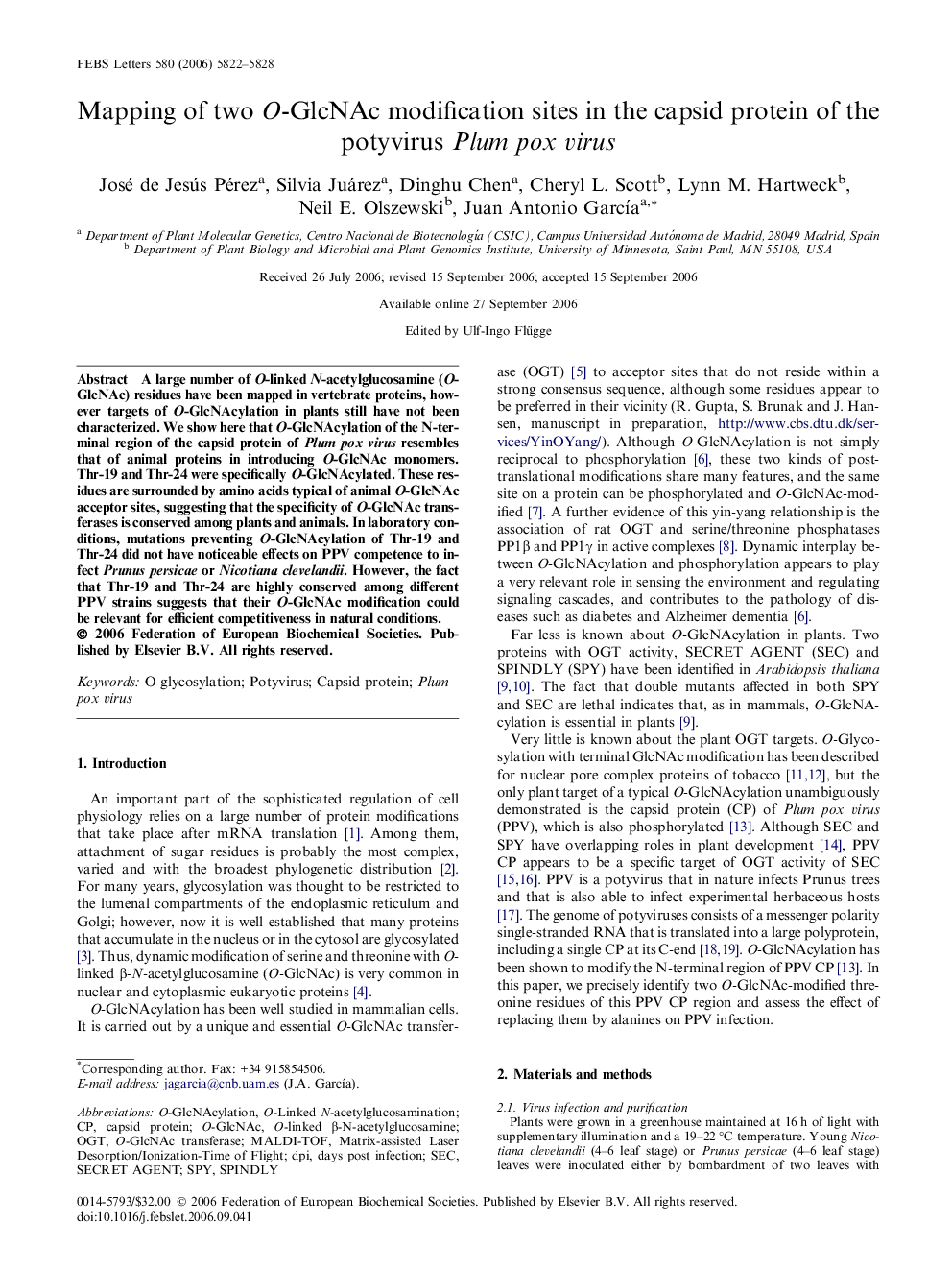| Article ID | Journal | Published Year | Pages | File Type |
|---|---|---|---|---|
| 2050290 | FEBS Letters | 2006 | 7 Pages |
A large number of O-linked N-acetylglucosamine (O-GlcNAc) residues have been mapped in vertebrate proteins, however targets of O-GlcNAcylation in plants still have not been characterized. We show here that O-GlcNAcylation of the N-terminal region of the capsid protein of Plum pox virus resembles that of animal proteins in introducing O-GlcNAc monomers. Thr-19 and Thr-24 were specifically O-GlcNAcylated. These residues are surrounded by amino acids typical of animal O-GlcNAc acceptor sites, suggesting that the specificity of O-GlcNAc transferases is conserved among plants and animals. In laboratory conditions, mutations preventing O-GlcNAcylation of Thr-19 and Thr-24 did not have noticeable effects on PPV competence to infect Prunus persicae or Nicotiana clevelandii. However, the fact that Thr-19 and Thr-24 are highly conserved among different PPV strains suggests that their O-GlcNAc modification could be relevant for efficient competitiveness in natural conditions.
